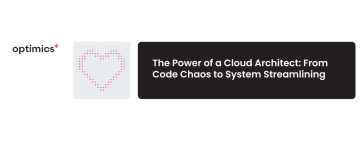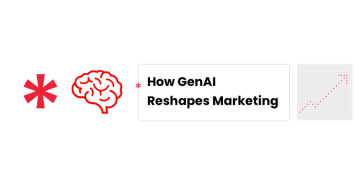
29. 3. 2023
The Power of a Cloud Architect: From Code Chaos to System Streamlining
It started out as a small project. A few lines of code here, a simple database there. Nothing too complicated, nothing that couldn’t be handled by a couple of enthusiastic developers with some spare time on their hands. But as the weeks went by, the project grew. New features were added, the user base expanded, and the data started pouring in. Before long, the once-simple codebase had become a tangled mess of spaghetti code and poorly designed systems. It was slow, inefficient, and prone to crashes. The developers were overwhelmed, and the project was in danger of collapsing under its own weight. That’s when the Cloud Architect stepped in. With a deep understanding of software architecture, a strong grasp of the latest technologies, and a laser focus on scalability and efficiency, the Architect quickly identified the problems with the existing system and set to work designing a solution that would meet the needs of the project.
The Role of a Cloud Architect
A Cloud Architect is a professional responsible for designing, building, and managing the architecture of cloud computing environments. This includes everything from selecting the right cloud platform and technologies to designing the overall system architecture, ensuring scalability and security, and managing the entire system throughout its lifecycle.
The Cloud Architect must have a deep understanding of software architecture, as well as a strong grasp of the latest technologies and tools. They must also have a keen business sense, as they must understand the business goals and requirements of the project and ensure that the architecture meets those goals.
Key Aspects of Cloud Architecting
When it comes to designing a cloud architecture, there are several key aspects that a Cloud Architect must consider:
Business Understanding
The Cloud Architect must have a deep understanding of the business goals and requirements of the project. This includes understanding the target audience, the market, and the competition. With this knowledge, the Cloud Architect can design a cloud architecture that meets the needs of the business.
Technologies Available
There are many different cloud platforms and technologies available, each with their own strengths and weaknesses. The Cloud Architect must have a strong understanding of the available technologies and be able to select the right ones for the project.
Off-the-Shelf Solutions
Many cloud platforms and tools come with pre-built solutions that can be used to streamline development and reduce costs. The Cloud Architect must be able to evaluate these off-the-shelf solutions and determine whether they are appropriate for the project.
Scalability
One of the key advantages of cloud computing is its ability to scale up or down as needed. The Cloud Architect must design a cloud architecture that is scalable and can handle increases in traffic and data volume.
Compliance
Depending on the industry, there may be strict regulations around data privacy and security. The Cloud Architect must ensure that the cloud architecture meets all relevant compliance requirements.
The Advantages of a Certified Cloud Architect
Having a Certified Cloud Architect on your team can provide several advantages:
Expertise
A Certified Cloud Architect has undergone extensive training and has a deep understanding of cloud architecture and technologies.
Efficiency
By designing a cloud architecture that is efficient and scalable, the Certified Cloud Architect can reduce development time and costs.
Security
A Certified Cloud Architect is well-versed in the latest security best practices and can ensure that the cloud architecture is secure and compliant.
Flexibility
With a scalable cloud architecture in place, the business can quickly adapt to changes in the market or the needs of the users.
Conclusion
In today’s world, cloud computing is becoming increasingly popular, and companies of all sizes are adopting it to streamline their processes and reduce costs. However, implementing and managing a cloud architecture is a complex task that requires a deep understanding of software architecture, the latest technologies, and a strong business sense.
A Certified Cloud Architect is a professional who can bring all of these skills to the table. By designing a cloud architecture that is efficient, scalable, secure, and compliant, they can help businesses to reduce development time and costs, quickly adapt to changes in the market, and ensure that their systems are reliable and secure.
So if you’re working in the data science or marketing branch and using cloud platforms like Google Cloud, it’s worth considering the advantages of having a Certified Cloud Architect on your team. With their expertise, you can take full advantage of the power of cloud computing and maximise the potential of your data-driven projects.
At Optimics we have multiple Certified Cloud Architects and you can bet they are part of every project baked here.
Written by Jakub Kriz
Využijte sílu*
marketingových dat k optimálnímu prodeji
Get in touch
Interested to find out the real potential* of your data?
Drop us your contact details and we will
get back to you shortly.


